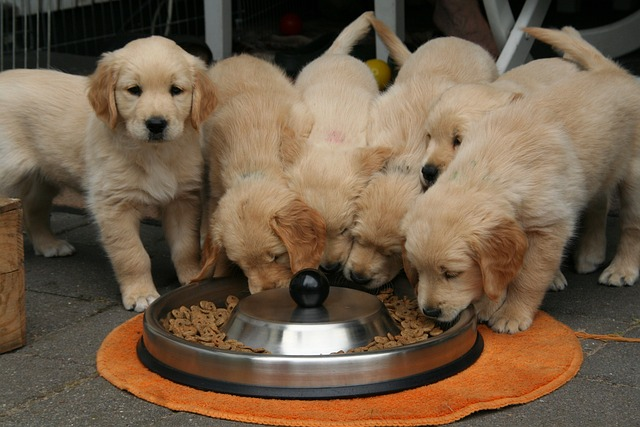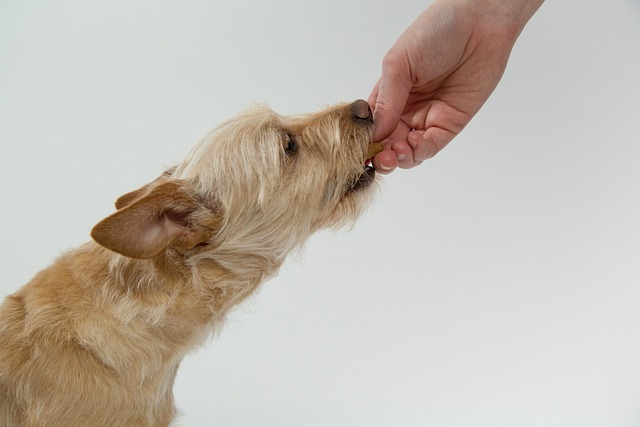Bland Diet for Dogs: Your Ultimate Guide to Boosting Your Pup’s Health!
We’re excited that you’ve discovered our blog article on the “Bland Diet for Dogs”! We recognize the concern pet owners experience when their beloved furry friends face gastrointestinal issues and digestive malfunctions.
A bland diet can often come to the rescue during such times, providing a gentle and soothing solution for your beloved canine companion.
Whether it’s due to an upset stomach, vomiting, diarrhea, or other gastrointestinal problems, a bland diet can help reset your dog’s digestive system and aid in its recovery.
In this comprehensive guide, we’ll explore the ins and outs of the bland diet, what it consists of, when and how to introduce it, and its potential benefits for your four-legged friend.
Let’s dive into the world of canine nutrition and give your pup the relief they deserve!
When Is The Bland Diet Used For Dogs?
The bland diet for dogs is commonly used in various situations when they experience gastrointestinal issues or digestive issues.
It consists of easily digestible, mild foods that are gentle on the stomach and can help soothe any discomfort.
Here are some instances when the bland diet may be recommended for dogs:
1. Upset Stomach
When your dog displays signs of an upset stomach such as vomiting, diarrhea, or excessive gas, a bland diet can be introduced to give their digestive system a break from regular, potentially irritating foods.
2. Gastrointestinal Illness
If your dog has been diagnosed with a mild gastrointestinal illness like gastritis or gastroenteritis, a bland diet can be prescribed by veterinarians to aid in the healing process.
3. Transitioning to New Food
When switching your dog’s diet to a new brand or type of food, a gradual transition with a bland diet can help prevent stomach upset and make the transition smoother.
4. Post-Surgery Recovery
After certain surgical procedures or anesthesia, dogs may experience temporary digestive disturbances. A bland diet can be used during the recovery period to prevent any additional stress on the digestive tract.
5. Food Allergies or Intolerances
In cases where your dog is suspected of having a food allergy or intolerance, a bland diet consisting of novel protein and carbohydrate sources can be implemented to identify and manage the issue.

The bland diet typically includes ingredients like boiled chicken, boiled rice, plain boiled potatoes, and boiled pumpkin.
It is essential to avoid seasonings, additives, and fatty foods during this period to ensure the diet remains gentle on your dog’s stomach.
As always, if your dog’s symptoms persist or worsen, consult with a veterinarian to identify any underlying health concerns and determine the most appropriate course of action.
List Of Top 10 Bland Diet For Dogs
When it comes to selecting a bland diet for dogs, it’s essential to choose foods that are gentle on their stomach and easy to digest.
Here are the top 10 bland diet options for dogs:
1. Boiled Chicken
Lean, boneless, and skinless chicken is a popular choice for a bland diet, providing easily digestible protein.
2. Boiled Rice
Plain white rice is a staple in the bland diet, offering carbohydrates to help bind stools.
3. Boiled Turkey
Similar to chicken, turkey is a lean and mild alternative that can be included in the diet.
4. Boiled Lean Ground Beef
When opting for beef, choose lean ground meat to minimize fat content.
5. Boiled Potatoes
Plain-boiled potatoes offer a good source of easily digestible carbohydrates.
6. Boiled Sweet Potatoes:
An alternative to regular potatoes, sweet potatoes add variety to the diet and are rich in nutrients.
7. Boiled Pumpkin
Canned plain pumpkin is an excellent source of fiber and can aid in digestion.
8. Boiled Zucchini
Zucchini is a low-calorie vegetable that can be added to the diet for variety.
9. Low-Fat Cottage Cheese
In moderation, low-fat cottage cheese provides additional protein.
10. Plain Yogurt
Unsweetened plain yogurt with live probiotics can support gut health.

Remember, the bland diet should be fed for a short period (usually 2-3 days) and is not nutritionally enough on its own.
It is always best to consult with a veterinarian before starting a bland diet, especially if your dog has underlying health conditions or allergies.
Additionally, monitor your dog’s response to the diet, and if their symptoms persist or worsen, seek veterinary advice promptly.
Can I Buy Bland Dog Food Instead of Cooking My Own?
Yes, you can buy bland dog food instead of cooking your own. Many pet food manufacturers offer specially formulated bland diets that are gentle on a dog’s stomach and easily digestible.
These commercial bland dog foods often contain ingredients like boiled chicken, rice, and easily digestible carbohydrates, similar to what you would prepare at home.
Buying pre-made bland dog food can be convenient, especially during times when you might not have the time or resources to cook for your dog.
However, it’s essential to carefully read the labels and choose reputable brands that use high-quality ingredients and avoid artificial additives or preservatives.
Always consult with a veterinarian before making any significant changes to your dog’s diet to ensure it suits its specific needs and health condition. Don’t compromise your dog’s health.

When Do I Start Feeding My Dog a Bland Diet?
You should start feeding your dog a bland diet when they experience signs of an upset stomach or digestive issues. Here are some indications that it’s time to introduce a bland diet:
1. Vomiting
If your dog is vomiting, especially multiple times within a short period, it’s a sign that its stomach may be irritated.
2. Diarrhea
Frequent loose or watery stools can indicate gastrointestinal upset and may require a bland diet to help firm up the stools.
3. Gassiness
Excessive gas or bloating can be a sign of a sensitive stomach, and a bland diet can help alleviate these symptoms.
4. Loss of Appetite
If your dog suddenly loses interest in their regular food and shows reluctance to eat, it could be a sign of an upset stomach.
5. Abdominal Discomfort
Dogs may show signs of discomfort or pain in the abdominal area, such as whining, pacing, or unusual body postures.
6. Recent Diet Change
If you recently switched your dog’s food, they may have difficulty adjusting, and a bland diet can help ease the transition.
7. Food Allergies or Intolerances
If you suspect your dog has food allergies or intolerances, a bland diet with novel ingredients can be used to identify potential triggers.
8. Post-Surgery Recovery
After certain surgeries or medical procedures, a bland diet may be recommended during the recovery period.
As soon as you notice any of these symptoms, it’s best to withhold your dog’s regular food and start a bland diet.
However, if your dog’s condition is severe, persistent, or accompanied by other concerning symptoms, it’s essential to consult with a veterinarian for a proper diagnosis and treatment plan.
A vet can help determine if a bland diet is suitable for your dog’s specific situation and rule out any underlying health issues.
How long should I feed my dog a bland diet?
The answer to this question depends on your dog’s condition. However, you can understand through the following points which are discussed below.
- The duration of feeding a bland diet to your dog depends on the underlying cause of their upset stomach or digestive issues.
- Typically, a bland diet is fed for a short period, usually 2 to 3 days, to give your dog’s digestive system a chance to rest and recover.
- If your dog’s symptoms improve within this time frame, you can gradually transition them back to their regular diet.
- However, if symptoms persist or worsen, or if they have a chronic condition, you should consult with a veterinarian for further evaluation and guidance.
- In cases of acute illnesses or post-surgery recovery, your vet may recommend extending the bland diet for a few more days until your dog fully recuperates.
- While on the bland diet, monitor your dog’s overall health, appetite, and bowel movements to gauge their progress.
- Once your dog is back to their normal self and their gastrointestinal issues have resolved, you can reintroduce their regular balanced diet.
- Remember to make any dietary changes gradually to avoid upsetting your dog’s stomach again.
- If your dog has specific dietary restrictions or allergies, discuss them with your vet to ensure a suitable long-term diet plan is in place to maintain their overall health and well-being.
- Always prioritize your dog’s health and seek professional advice if you have any concerns about their diet or well-being.
FAQs
1. Can I feed my dog bland diets for an extended period?
Feeding a bland diet for an extended period is not recommended. The bland diet is intended as a temporary solution to soothe your dog’s upset stomach or digestive issues. Typically, it should only be fed for 2 to 3 days.
If symptoms persist beyond this timeframe or if they have an underlying health condition, consult with a veterinarian for further evaluation and a long-term dietary plan.
2. Can I add any seasonings or spices to the bland diet for flavor?
No, it’s essential to avoid adding any seasonings, spices, or additives to the bland diet for dogs. These ingredients can irritate your dog’s sensitive stomach and may worsen its condition.
Stick to plain, unseasoned, and easily digestible foods like chicken, rice, and pumpkin to ensure the diet remains gentle on their digestive tract.
3. Can I use the bland diet as a regular meal for my dog?
The bland diet is not nutritionally complete on its own and should not be used as a regular meal for your dog. It lacks essential nutrients and may lead to nutritional deficiencies if fed long-term.
Once your dog’s stomach issues have resolved, gradually transition them back to their regular balanced diet, which provides all the necessary nutrients for their overall health.
4. My dog has food allergies. Can I use the bland diet to identify the allergen?
Yes, the bland diet can be a useful tool in identifying potential food allergies or intolerances in dogs.
When introducing the bland diet, use novel ingredients that your dog has not consumed before, such as a protein source like boiled turkey or a carbohydrate source like boiled sweet potatoes.
Monitor your dog’s response and gradually reintroduce their regular food to identify any specific allergens that may be causing issues.
If you suspect food allergies, consult with a veterinarian to develop a suitable long-term diet plan for your dog.
5. Can I include scrambled eggs in the bland diet for my dog?
Yes, scrambled eggs can be a suitable addition to a bland diet for dogs.
Eggs are a good source of protein, and when scrambled without added butter, oil, or seasoning, they become gentle on your dog’s stomach.
However, ensure that your dog doesn’t have any allergies or sensitivities to eggs before introducing them. Start with a small amount and monitor your dog’s response.
If there are no adverse reactions, scrambled eggs can be a tasty and nutritious option for a bland diet.

Final Notes
In conclusion, a bland diet for dogs can be a valuable and effective way to provide relief during times of upset stomach or digestive issues.
It consists of easily digestible, mild foods like chicken, ground beef, rice, and pumpkin, which can soothe your dog’s gastrointestinal system.
The bland diet is not intended for long-term use and should only be fed for a short duration, usually 2 to 3 days.
While preparing a bland diet at home can be a practical solution, commercial options are also available for added convenience.
Always remember to avoid seasoning, spices, and fatty foods when preparing the diet, as they may aggravate your dog’s sensitive stomach.
However, it’s crucial to remember that the bland diet is not nutritionally complete on its own and should not replace your dog’s regular balanced diet.
Consult with a veterinarian to address any underlying health concerns and ensure that the bland diet is appropriate for your dog’s specific needs.
By following these guidelines and seeking professional advice when needed, you can help your furry companion recover quickly and comfortably.
The well-being of our beloved pets should always be a top priority, and with the right care and attention to their dietary needs, they can lead happy, healthy lives.
